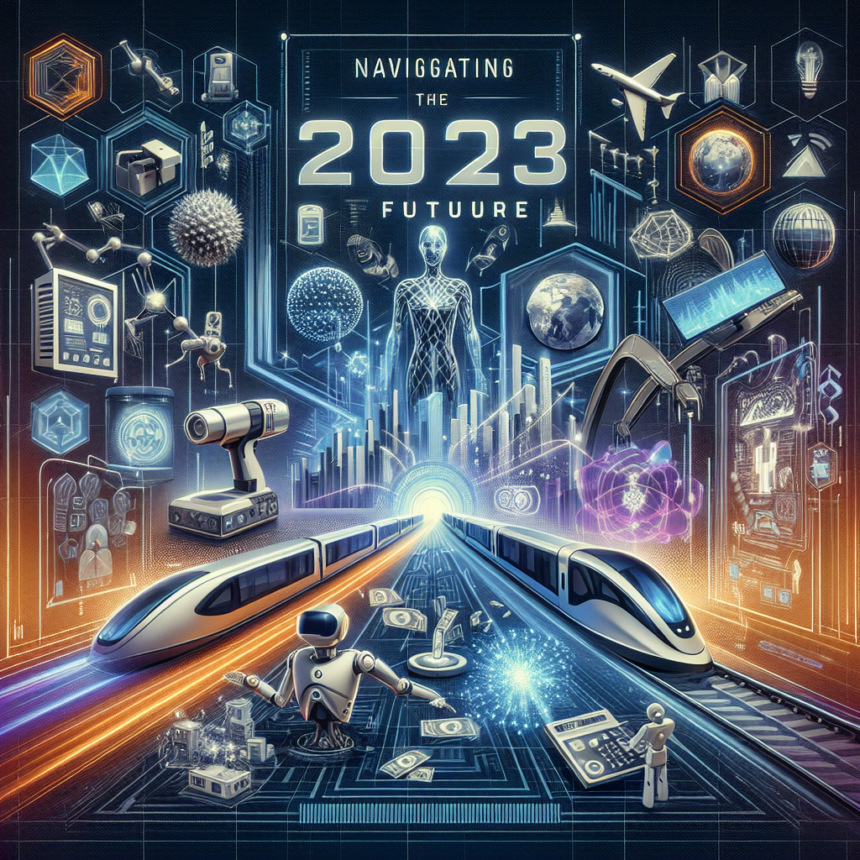The technological landscape is constantly evolving, with innovations driving dramatic changes across industries. As we enter 2023, several key trends are emerging that promise to reshape how businesses operate, compete, and connect with customers. Here, we explore the top five technology trends that are set to redefine industries this year.
1. Artificial Intelligence and Machine Learning
AI and machine learning continue to be at the forefront of technological advancements. These technologies are not only enhancing efficiency but are also enabling businesses to derive insights from vast amounts of data. In sectors such as healthcare, finance, and retail, AI algorithms can analyze patterns, predict outcomes, and personalize customer experiences. The rise of generative AI tools is also creating new possibilities for content creation, software development, and data analysis, ultimately transforming workflows and enhancing productivity.
2. The Internet of Things (IoT)
The Internet of Things (IoT) is revolutionizing how businesses operate by enabling interoperability between devices. As a result, industries are benefiting from real-time data collection and analysis, leading to improved operational efficiencies. For instance, in manufacturing, IoT sensors can monitor production lines for anomalies, helping companies minimize downtime and streamline processes. In the consumer sphere, smart home devices are personalizing user experiences and facilitating seamless automation. The continued expansion of 5G networks is further accelerating IoT’s growth, providing faster and more reliable connections.
3. Cloud Computing and Edge Computing
Cloud computing remains a foundational technology for businesses looking to scale operations and enhance collaboration. In 2023, we will see a shift towards edge computing, which processes data closer to the source, significantly reducing latency. This trend is particularly important for IoT devices that need real-time analytics. As industries increasingly rely on remote work and distributed teams, the combination of cloud and edge computing enables organizations to implement flexible, efficient, and secure solutions, empowering employees regardless of their locations.
4. Blockchain Technology
Blockchain technology is maturing beyond its initial applications in cryptocurrencies. In 2023, industries are leveraging blockchain for enhanced transparency, security, and efficiency in transactions. Sectors like supply chain management and finance are using blockchain to create tamper-proof records and facilitate smarter contracts. This fosters trust among stakeholders and can reduce fraud. As businesses seek to decentralize operations and ensure data integrity, blockchain’s role will continue to grow.
5. Augmented Reality (AR) and Virtual Reality (VR)
Augmented Reality (AR) and Virtual Reality (VR) technologies are offering immersive experiences that are transforming industries such as education, marketing, and entertainment. In retail, AR applications allow customers to visualize products in their environments before making a purchase. Meanwhile, VR is being used for training simulations, providing employees with practical experience in a risk-free environment. As AR and VR technologies become more accessible and affordable, their application across different sectors will increase, driving innovation and engagement.
FAQs
Q: How will these technology trends affect small businesses?
A: Small businesses can leverage these technologies to enhance efficiency, improve customer experiences, and remain competitive in the market. Cloud computing, for example, offers tools for collaboration and data management without heavy investments.
Q: Are these trends sustainable in the long term?
A: Yes, these trends are expected to continue evolving and shaping industries. As organizations adapt to new technologies and capabilities, they will identify new ways to innovate and meet customer expectations.
Q: How do I keep my skills updated in light of these trends?
A: Continuous learning is essential. Enroll in online courses, attend workshops, and stay informed about industry news to keep your skills and knowledge relevant.
Q: Will these technologies lead to job displacement?
A: While some jobs may be automated, new technologies often create new roles requiring different skills. Upskilling and reskilling the workforce will be integral as industries adopt these technologies.
In summary, the technology landscape in 2023 is marked by advancements that are transforming industries. By embracing these trends, businesses can navigate the future confidently and innovate in ways that drive success.











